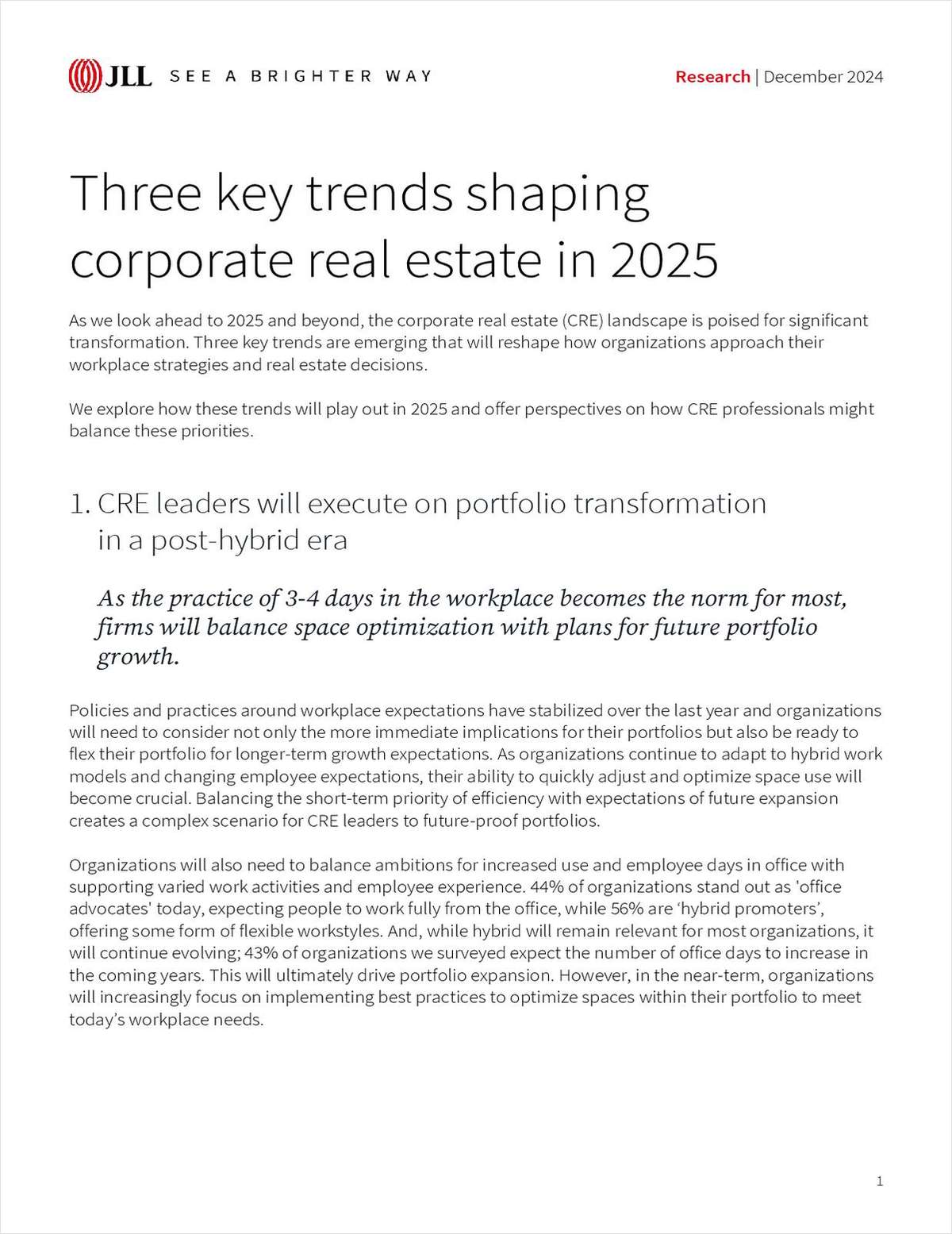As the federal government retreats from pollution- and carbon-reducing policies, states and even businesses continue to move forward with environmental initiatives, with some significant opportunities for real estate investors and developers. That is according to Lily McKenna and Tom Muller of Manatt, Phelps & Phillips LLP. According to the duo, cap-and-trade programs, for example, offer businesses that are able to convert to more environmentally-friendly technologies the option to sell emission permits to other businesses needing more room to emit greenhouse gases.
The opinions expressed in the below commentary are McKenna and Muller's own.
The U.S., several states, Canada, the European Union, Korea, China and other countries have adopted these initiatives to allow businesses to allocate responsibility for environmental improvements on a market basis. California, for example, recently approved an extension to its very successful Cap-and-Trade Program into 2030. Some of these programs are now being linked: California's carbon auction is already linked to Quebec and may soon incorporate Ontario, which launched a cap-and-trade program earlier this year.
Cap-and-trade programs have thus far focused mainly on large polluters such as food, glass, steel and paper manufacturers, as well as electricity generators and oil refineries. In the last few years, however, many states have adopted aggressive carbon reduction targets requiring significant emissions reductions in the transportation and building sectors to achieve their goals. The commercial and residential real estate sector is responsible for 12% of greenhouse gas emissions.
At the same time, tenants and consumers are demanding more environmentally efficient real estate, switching to electric vehicles, seeking out energy efficient homes, and opting into programs that subsidize solar and other alternative energy sources. Many cities—and many tenants—now require that new development be LEED-certified.
As these changes accelerate, commercial real estate owners will benefit from addressing this shift in demand. An easy case is the increasing demand for electric and hybrid vehicle charging stations in office, retail and mixed-use residential projects. These efforts not only signal environmental awareness, but may also benefit from state subsidies.
Easton Town Center, a shopping complex in Columbus, Ohio, noticed that EV ownership rates in Ohio were increasing annually by 40%. Easton partnered with ChargePoint to install charging stations for customer parking. Since then, Easton has seen about 350 EV drivers utilize their charging stations each month, and approximately 40% of those drivers spend more than the average amount of customer time shopping at Easton.
Increasing EV use and a growing preference for renewable energy sources are beginning to strain the electric grid as the influx of solar energy supply during the day sharply declines at night or with weather. In response, many utilities are adopting “time-of-use” rates, increasing rates during peak hours of use and creating an incentive to shift electricity use to off-peak hours.
Owners are responding by installing battery storage onsite or looking to other demand response measures to help with energy flow. Installing such “microgrid” solutions can lead to lower electricity rates, fewer supply disruptions and less reliance on high-carbon emitting back-up-generators, reducing ownership expenses or tenants' total cost of occupancy.
So notwithstanding the federal government's efforts to relax federal environmental regulations, state and local governments and consumer demand will continue to push commercial real estate development toward more environmentally efficient practices, creating real opportunities for those who get ahead of this curve.
As the federal government retreats from pollution- and carbon-reducing policies, states and even businesses continue to move forward with environmental initiatives, with some significant opportunities for real estate investors and developers. That is according to Lily McKenna and Tom Muller of
The opinions expressed in the below commentary are McKenna and Muller's own.
The U.S., several states, Canada, the European Union, Korea, China and other countries have adopted these initiatives to allow businesses to allocate responsibility for environmental improvements on a market basis. California, for example, recently approved an extension to its very successful Cap-and-Trade Program into 2030. Some of these programs are now being linked: California's carbon auction is already linked to Quebec and may soon incorporate Ontario, which launched a cap-and-trade program earlier this year.
Cap-and-trade programs have thus far focused mainly on large polluters such as food, glass, steel and paper manufacturers, as well as electricity generators and oil refineries. In the last few years, however, many states have adopted aggressive carbon reduction targets requiring significant emissions reductions in the transportation and building sectors to achieve their goals. The commercial and residential real estate sector is responsible for 12% of greenhouse gas emissions.
At the same time, tenants and consumers are demanding more environmentally efficient real estate, switching to electric vehicles, seeking out energy efficient homes, and opting into programs that subsidize solar and other alternative energy sources. Many cities—and many tenants—now require that new development be LEED-certified.
As these changes accelerate, commercial real estate owners will benefit from addressing this shift in demand. An easy case is the increasing demand for electric and hybrid vehicle charging stations in office, retail and mixed-use residential projects. These efforts not only signal environmental awareness, but may also benefit from state subsidies.
Easton Town Center, a shopping complex in Columbus, Ohio, noticed that EV ownership rates in Ohio were increasing annually by 40%. Easton partnered with ChargePoint to install charging stations for customer parking. Since then, Easton has seen about 350 EV drivers utilize their charging stations each month, and approximately 40% of those drivers spend more than the average amount of customer time shopping at Easton.
Increasing EV use and a growing preference for renewable energy sources are beginning to strain the electric grid as the influx of solar energy supply during the day sharply declines at night or with weather. In response, many utilities are adopting “time-of-use” rates, increasing rates during peak hours of use and creating an incentive to shift electricity use to off-peak hours.
Owners are responding by installing battery storage onsite or looking to other demand response measures to help with energy flow. Installing such “microgrid” solutions can lead to lower electricity rates, fewer supply disruptions and less reliance on high-carbon emitting back-up-generators, reducing ownership expenses or tenants' total cost of occupancy.
So notwithstanding the federal government's efforts to relax federal environmental regulations, state and local governments and consumer demand will continue to push commercial real estate development toward more environmentally efficient practices, creating real opportunities for those who get ahead of this curve.
Want to continue reading?
Become a Free ALM Digital Reader.
Once you are an ALM Digital Member, you’ll receive:
- Breaking commercial real estate news and analysis, on-site and via our newsletters and custom alerts
- Educational webcasts, white papers, and ebooks from industry thought leaders
- Critical coverage of the property casualty insurance and financial advisory markets on our other ALM sites, PropertyCasualty360 and ThinkAdvisor
Already have an account? Sign In Now
*May exclude premium content© 2025 ALM Global, LLC, All Rights Reserved. Request academic re-use from www.copyright.com. All other uses, submit a request to [email protected]. For more information visit Asset & Logo Licensing.






